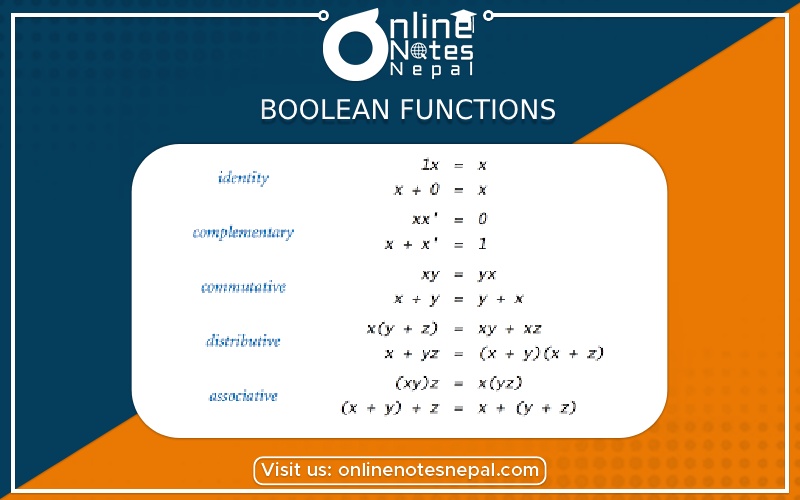Published by: Dikshya
Published date: 09 Jul 2023

Boolean functions, also known as Boolean expressions or logic functions, are mathematical functions that operate on binary variables and produce binary outputs. They are fundamental building blocks in Boolean algebra and digital logic design.
A Boolean function takes one or more binary variables as inputs and produces a binary output based on predefined logical rules. The inputs and output of a Boolean function can have only two possible values: 0 (false) or 1 (true). Boolean functions can be represented using truth tables, logic gates, Boolean expressions, or other graphical or symbolic representations.
Here are some key concepts related to Boolean functions:
1. Variables: Binary variables, also called Boolean variables or logic variables, are the inputs to a Boolean function. They can be denoted by letters such as A, B, C, etc., and can take on values of 0 or 1.
2. Operators: Boolean functions use logical operators to define their behavior. The three primary logical operators are:
3. Truth Table: A truth table is a tabular representation of a Boolean function that shows all possible combinations of input values and their corresponding output values. Each row in the truth table represents a specific input combination and the resulting output value.
4. Boolean Expressions: Boolean functions can be expressed using Boolean expressions, which are combinations of variables and logical operators. For example, A · B + C' represents a Boolean function with two inputs (A and B) and one complemented input (C').
5. Logic Gates: Boolean functions can be implemented using logic gates, which are physical or electronic devices that perform logical operations. Common logic gates include AND gates, OR gates, NOT gates, and combinations of these gates.
Boolean functions have numerous applications in digital logic design, computer architecture, programming, circuit design, and other fields. They are used to represent and manipulate logical conditions, control the behavior of digital systems, design and optimize digital circuits, and perform logical operations in programming and algorithms. By combining Boolean functions and applying the theorems and properties of Boolean algebra, complex logic systems can be built, enabling the design and implementation of sophisticated digital systems.